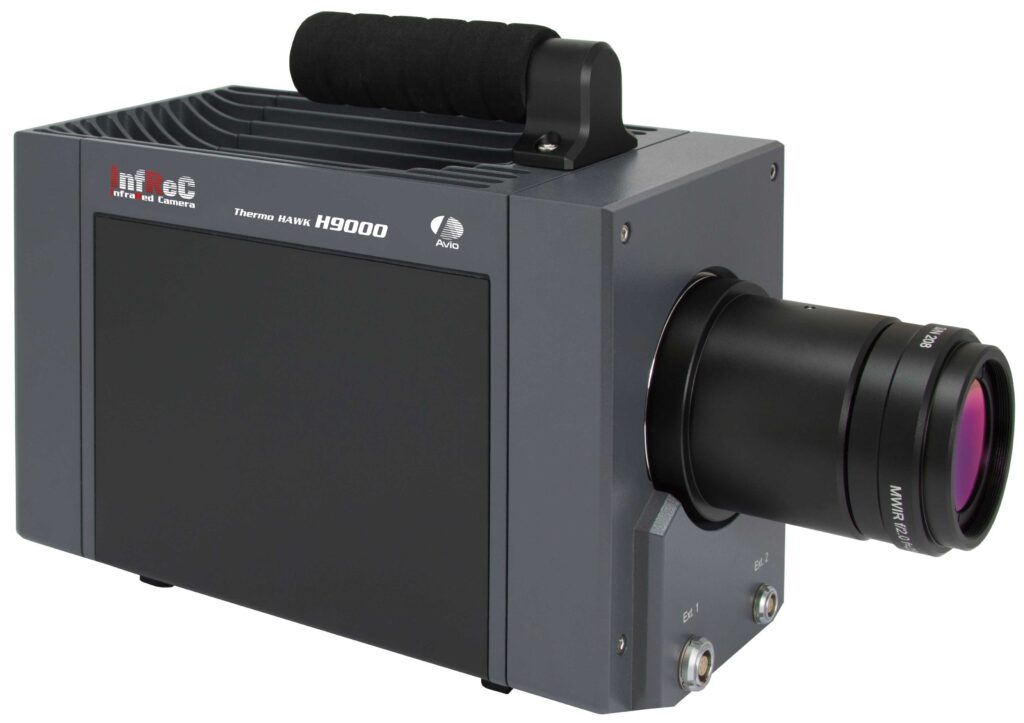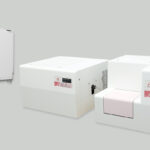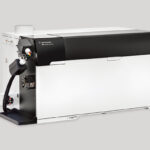ASIA ELECTRONICS INDUSTRYYOUR WINDOW TO SMART MANUFACTURING
New IR Camera Reinforces ICs During Manufacturing
Infrared light is invisible and emitted from all objects with temperature. Because the temperature distribution is measurable in a non-contact manner, the thermography for screening and inspection of persons having a fever has rapidly become widespread due to the coronavirus crisis.
Conventionally, industrial applications use infrared light for checking deterioration of equipment and bridges using their surface temperature variation. Particularly, semiconductor manufacturing factories use them a lot also.
A silicon formed from a silicon wafer melts into a columnar single crystal mass (ingot). A wire slices the ingot and then ground to flatten the surface for the improvement of product reliability. Finally, the abrasive material is ready for polishing.
Efficient Detection, Inspection
The F50 infrared thermography camera (Thermo FLEX F50) of Nippon Avionics Co., Ltd. measures the temperature of the rollers and bearings of machines used in such manufacturing processes. To minimize adverse effects on production, it detects abnormal heat generation that is a precursor of equipment failure. It is possible to attach and detach the camera head for inspection even in a narrow space.
Inspection of temperature distribution as well as intensity of distribution require infrared light.
In the process of writing a circuit pattern on a material thin film requires a photosensitive resin (photoresist) application. Thus, a spin coater ensures uniform coating as it rotates at high speed the silicon wafer, which contains the resist. Then, the infrared camera detects uneven coatings as the resist spreads over the entire surface.
The polished wafer surface is highly reflective like a mirror and easily reflects infrared light. On the other hand, the surface with applied resist is more transparent and less reflective, and the difference in such physical characteristics appears as uneven coating.

Conventionally, for a circuit built on the wafer, a voltage applied with a needle-shaped probe does the inspection of the electrical characteristics. On the other hand, the company focuses on the evaluation of minute leakage current.
The measurement system Lock-in Thermography employs the highest H9000 spec thermo camera to detect minute temperature differences down to 1mK that exist in the current flow along the circuit. By repeating pulse-like current flow many times and accumulating the points where the temperature changes, a higher resolution thermo camera can detect the temperature difference.
Adopts Lock-in Systems
With the progress in the miniaturization of semiconductors, the leakage current is also becoming smaller. This lock-in system plays role in probe inspection before dicing and after chipping.
The infrared cameras widely support semiconductor manufacturing factories also by temperature control during ingot manufacturing, foreign matter inspection on wafers after slicing, etc.
According to Nippon Avionics, semiconductor manufacturers and device manufacturers in Japan are increasingly adopting lock-in systems as quality analysis tools. Although industrial use remained inactive for a long while due to the COVID‑19 crisis, the capital investment has returned from June 2021. The company will further promote introduction of the lock-in systems in collaboration with probe manufacturers.




